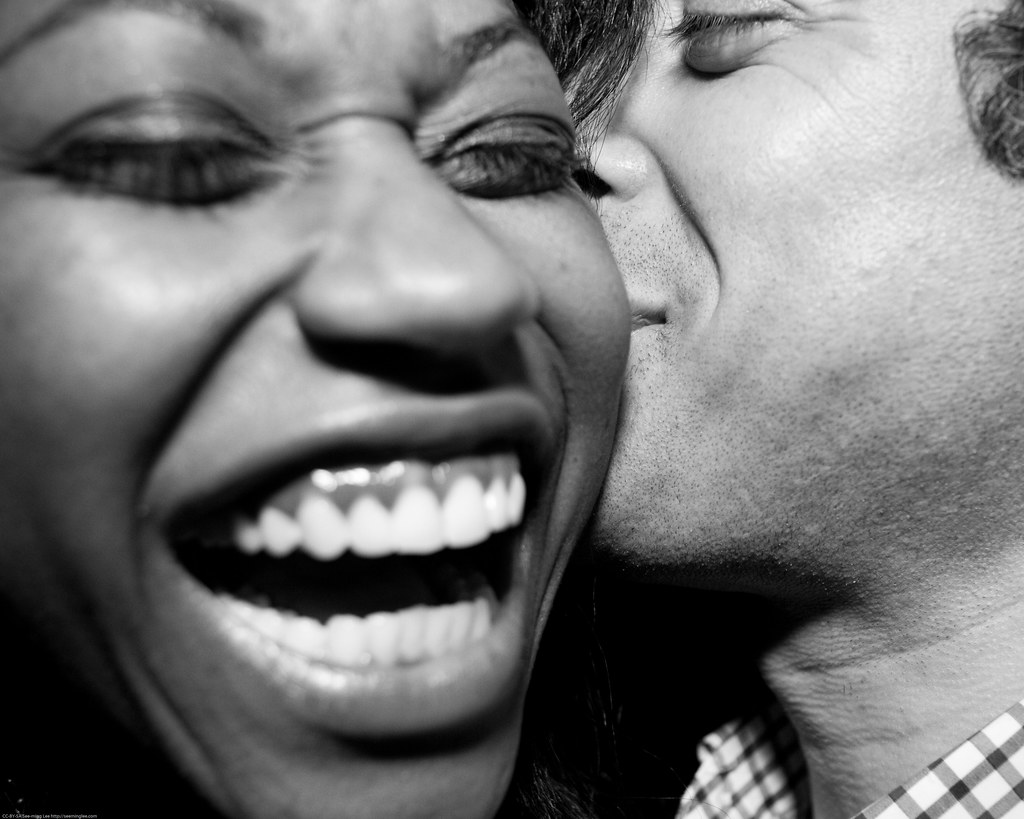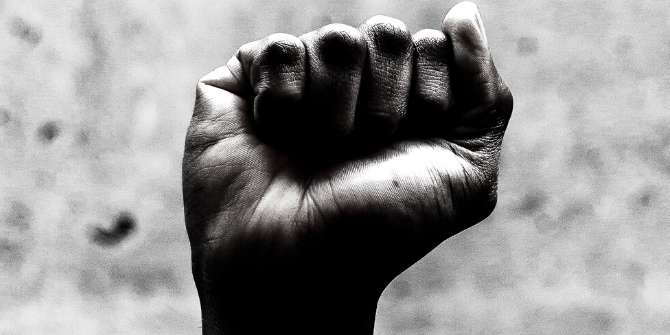How should we make sense of the iconic act of the kiss? How and when did it become a vital sign of romance and love? In this book, Marcel Danesi argues that the romantic kiss had its origins in the medieval court ritual. He aims to explore how the kiss emerged in the context of adultery and non-traditional amorous relationships. He takes the reader through medieval poetry and romance literature to modern paintings, movies, and pop songs, arguing that its romantic incarnation signalled the birth of popular culture. Catherine Hezser finds that The History of the Kiss is too light on analysis and lacks a convincing argument to make it useful for academic reading.
 The History of the Kiss! The Birth of Popular Culture. Marcel Danesi. Palgrave Macmillan. 2013.
The History of the Kiss! The Birth of Popular Culture. Marcel Danesi. Palgrave Macmillan. 2013.
The kiss is a ritual practically everyone in contemporary society is familiar with, based on one’s own experiences and its numerous and varied representations in literature, art, film, and pop culture. Therefore writers and scholars may either find the topic trivial or have nothing new and significant to say about the expression and meaning of the kiss. In The History of the Kiss, Marcel Danesi, Professor of Linguistic Anthropology at the University of Toronto, is mainly interested in the semiotic meanings of the kiss, and his recent book traces its representations in popular literary and artistic genres from antiquity until today, although a chronological order is not maintained. Through lists and examples the book indicates the significance of the representation of the kiss in a variety of artistic and popular forms and genres. At less than 200 pages, this book is not intended to be a substantial contribution to the academic literature on the topic and Danesi is clearly not a historian. He does not investigate the history of these representations in any depth. Unfortunately the survey therefore leads to erroneous presumptions, lists instead of analysis, and platitudes rather than original insights.
The author’s main argument is that the romantic kiss emerged in the context of courtship rituals in the Middle Ages expressed in romantic novels, poetry and songs. He points to examples from the troubadour tradition of the High Middle Ages, the Romance literary genre, and the later Italian Commedia dell’ Arte which celebrate and ridicule romantic and adulterous relationships that did not follow normative patterns but took certain liberties. Unfortunately, the ancient historical background is summarized on six and a half pages only since, according to the author, romantic kissing did not begin until the medieval period. Therefore potential ancient representations of the romantic kiss (see, for example, Narrating Desire: Eros, Sex, and Gender in the Ancient Novel, edited by M.P. Futre Pinheiro et al.) are either interpreted away or not mentioned at all. The greatest lacuna in this regard are the ancient Greek and Jewish romantic novels, which the author may not have been familiar with. These novels introduced the theme of romantic love into the traditional practice of arranged marriages and contain numerous references to the romantic kiss, as one would expect. In the Greek Jewish romance Joseph and Aseneth (probably written between the first c. B.C.E. and the second c. C.E.) the kiss between the lovers already plays an important role: it appears as a boundary marker and a religious ritual because it is carried out with the mouth, an instrument of prayer that may not become adulterated. Sadly, the significance of the mouth as the bodily organ enacting the kiss is never discussed by the author, nor are kisses on hands and heads and their relationship to lip kisses. In Joseph and Aseneth the mouth kiss initiates the familial relationship between the couple and is eventually carried out as part of the wedding ceremony. The kiss is similarly important in the ancient Greek romantic novels, a phenomenon which the author missed entirely. There, too, the circumstances of the gesture and the locations of the body on which the kiss is placed are crucial. Against Danesi it therefore seems that the kiss amongst lovers first came to the fore in the ancient Greek romantic novels in which the lovers had to overcome various hurdles before being united in marriage. It is this ancient context rather than the medieval court tradition which deserves to be investigated first.

The following chapters about the kiss in medieval courtship rituals, modern fiction, songs, art, movies, and the internet merely list examples of the respective categories without examining any of them in depth. One would, for example, expect Munch’s iconic image The Kiss by the Window (1892) to have merited more than three short sentences which are no more than platitudes: “When two people kiss intimately, they become one” (p.82). The title of Munch’s painting is mistakenly applied to Magritte’s image of The Lovers (1928) as well. In the chapter on art, modern paintings are mentioned alongside Madonna kissing Britney Spears in an MTV video and Etruscan images of the fifth century B.C.E. There is neither cohesion nor proper argument here. In the case of controversial scholarly opinions and interpretations, the author merely mentions them rather than taking a stand himself. For example, when dealing with different theories about the origins of Valentine’s Day, he concludes that “It is impossible to determine which version is the historically correct one” (p.29). Representations of homosexual kisses are dismissed as ambiguous with regard to their romantic potential (pp. 79-80).
The allegedly subversive nature of the romantic kiss – distinguished from the erotic kiss and other types of kisses – is a theme stressed throughout the book: “the kiss originated as a need to subvert the extent religious and patriarchal order in medieval Europe” (p.16); it “has led to the sexual revolution of the modern Western world” (p.45) by liberating female sexuality. In light of the continuous patriarchal system of medieval and modern society these arguments are not persuasive. From medieval courtship rituals until modern movies, the kiss is most often represented as a male initiative in which women remain relatively passive. As such, it is represented as a first step towards sexual intercourse rather than a “spiritual” gesture idealizing love. That the romantic kiss “took the shame out of feminine love, allowing the latter to change the world” (p.45) cannot be corroborated. Unfortunately, such platitudes are repeated throughout the book.
Part of Danesi’s argument and the title of the book is the alleged connection between the medieval emergence of the romantic kiss (note the conflation between practice and representation: does the author assume that the practice of romantic kissing began in medieval times only?) and the “birth of popular culture”. What “popular” culture means and how the two phenomena are related is never further explored, however. Should “popular” culture in the sense of ordinary people’s cultural practices not have existed before the Middle Ages and marriages based on love? Do arranged marriages preclude “popular” culture? One may also argue that despite romantic courtship literature medieval society remained deeply traditional and patriarchal in a variety of regards. The author seems to be aware of the weakness of his argument by using the term “proto-popular culture” (p.2) and inducing “indirect, anecdotal evidence” (p.44) about the liberating potential of the romantic kiss. Although it is true that in contemporary society female “troubadours” aka pop idols sing about and enact the kiss, they do so in a highly sexualized visual environment which caters to rather than subverts traditional patriarchal notions of women. The author’s conclusion (dependent on science journalist Sheril Kirshenbaum’s The Science of Kissing: What Our Lips Are Telling Us, as so much in this book) that the kiss will survive in the internet age because it is “now completely connected with love” (p.158) seems illusional.
Altogether, the book can serve only as a very limited and superficial introduction to the ritual and symbolic aspects of the kiss, which deserve much deeper historical study by experts in the respective time periods and literatures. Thorough and comprehensive analyses of the representation and significance of the kiss in ancient and medieval literature are still waiting to be written. For early modern times interested readers should consult the well-researched articles in The Kiss in History edited by Karen Harvey.
——————————————————
Catherine Hezser is Professor of Jewish Studies in the Department of the Study of Religions at SOAS. She received her Ph.D. from JTSA, New York and a Dr. theol. from the University of Heidelberg. Read reviews by Catherine.








1 Comments